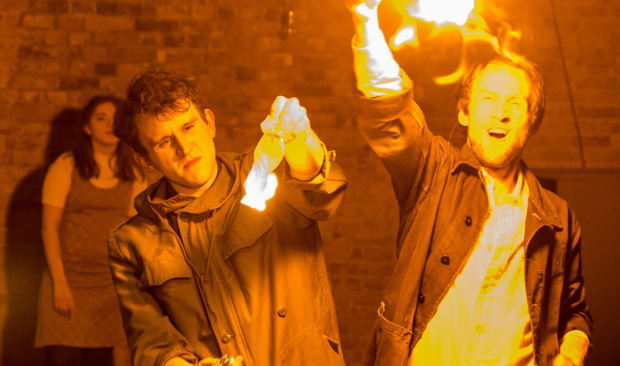The Angry Brigade (Bush Theatre)
Following a UK tour, James Graham’s production has opened at the Bush Theatre

© Manuel Harlan
James Graham is something of a Seventies specialist. This House, famously, tracked the machinations of that decade’s hung parliament, but he’s also dramatised Edward Heath’s tenure as PM and, in Sons of York, the Winter of Discontent that brought Britain to a standstill. Each play has found some parallel with the present.
Here, he turns his attention to disillusionment, protest and alternative politics – all bubbling up now as they were back then. The Angry Brigade was a group of anarchists, born out of public demonstrations in 1968. They began a bombing campaign a few years later, railing at the British establishment and the consumer-capitalist status quo, and became the basis for Doris Lessing’s novel The Good Terrorist.
Well-educated and increasingly out of their depth, The Angry Brigade lived as a collective, renouncing possessions and privacy by knocking down the walls inside their rented terraced house. Their targets included the homes of Conservative MPs, upmarket boutiques and the Miss World Competition at the Royal Albert Hall, but the group were largely ineffectual – no Baader-Meinhof Gang or First of May Group.
Graham tackles their story with form, in a play of two halves. The first follows the police on the Angry Brigade’s case; the second, the Angry Brigade’s plot against the police. Taking a lead from a line in an Angry Brigade ‘communiqué’ – "The AB is the man or woman sitting next to you" – the same actors play both police and protestors, each staring at their own mugshots on the wall. "We’re getting closer," each side warns the other. It’s more true than they realise.
Attempting to understand the Angry Brigade philosophy, the officers come to appreciate the appeal of free living and loving, while the anarchists start to buckle without rules. In the splintering cell, Pearl Chanda’s Anna Mendleson increasingly craves some kind of stability and normality. Both sides come full circle as the political spectrum eats its own tail.
Each act’s content informs its style. While the police play by the rules of old-school naturalism, with a linear narrative, a fourth-wall-style set and full-bodied supporting characters, the anarchists’ act is totally free-form. It trips into flashbacks and narratives, gives actors free reign across the whole space and suggests secondary characters without costume changes. Slamming filing cabinets together represents bomb blasts, as Tom Gibbons‘ sound design swaps recorded effects for live-action foley, reflecting the anarchists’ insistence on a new reality. The taps of a typewriter create a shrill sense of tension.
Nonetheless, it’s better on paper than in practice. James Grieve‘s production hasn’t quite ironed out the play’s lumps and bumps, missing the spoofish seriousness of the first half in particular. Lucy Osborne‘s corkboard design – a product of the tour – serves the anarchists better than the officers, and it’s not helped by poor execution and misfiring magnets.
Still, the story grips and the actors are given plenty of licence. Mark Arends is wiry and intense as both the commanding officer and the Brigade’s insistent leader. Harry Melling has fun with his extra roles, lampooning a pompous, relic of a Chief Inspector with particular relish, while Chanda is superb as Mendleson, a nice polite girl all at sea.
The Angry Brigade runs at the Bush theatre until 13 June.












